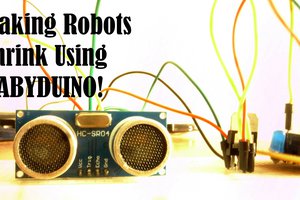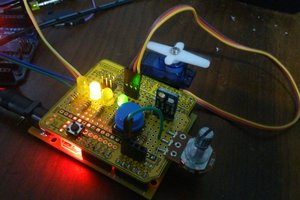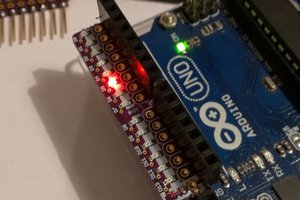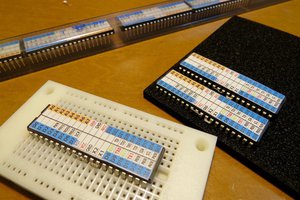ESP8266 board with classic Arduino footprint
trying to match the classic Arduino footprint with an ESP-12E/F, PCF8574 port expander and a 4051 as an analog demultiplexer - for fun
trying to match the classic Arduino footprint with an ESP-12E/F, PCF8574 port expander and a 4051 as an analog demultiplexer - for fun
To make the experience fit your profile, pick a username and tell us what interests you.
We found and based on your interests.
Create an account to leave a comment. Already have an account? Log In.
Are you plan to use the SPI pins on the bottom edge of the ESP-12F?
I don't know if it is working. I seen confusing information if it can be shared between the flash and external periferals.
I just seen somewhere, that the other SPI module pins can be remapped there and the switching between the SPI modules and the CS lines handled by the chip itself.
I guess I've no other option, than buy an ESP-12F, create a breakout and experiment.
Thanks anyway.
@SUF Yep, they're useless unless you want to disable or ignore the onboard flash. The "Hardware User Guide" shows a way of wiring the ESP8266 such that the SPI flash is on the other (non-SDIO mux'd) SPI port so that you can have local code storage. It doesn't have software examples (or at least didn't last I checked) but it appears that it can't boot directly from SPI in that config. You would likely need the SDIO master to send an IPL firmware of some sort that then sets up the other SPI master for code fetching.
The only advantage to that interface on an ESP-12F in standalone mode is that you can hold the ESP in reset (assert CH_PD) and use an external master to write the SPI flash much faster than a UART load.
well on my #Ignore this ESP8266 boards it is broken out :) @SUF if you can find a link please share!
@SUF Hmm, https://github.com/esp8266/Arduino/issues/1062 - something like this? Sounds like the SPI1 bus would be linked to the same pins on the bottom and you would free the pins 12 - 14 for something else. Do you "just" need more pins for something?
I can't find all of my original readings. Here are some hints:
http://tech.scargill.net/esp-12f/ - Check the coments
http://d.av.id.au/blog/esp8266-hardware-spi-hspi-general-info-and-pinout/ - here is about the basic concept.
Actually I read something else also, but I can't find it.
@SUF first link comments are useless :( they talk about the wrong SPI connection. All their examples and links where connected to 12, 13 and 14, although they were replies to the "bottom pins" comment. But the other link made sense. So why would you want that, sounds not so useable?
Why not? :-)
My plan is a modular system for my AutomaTales (https://hackaday.io/project/10227-automatales) project. I planed to break out an SPI, an I2C, and 8 GPIOs, as separately as possible. I want to give a try. If it works great. If not, still not a big problem just limiting my options at the sensor nodes.
BTW. I was able to find ESP-12Es at a local store, so looks like I can play with it during the weekend.
@SUF In my #ESP8266 RFid reader I use the HSPI (GPIO12,GPIO13,GPIO14) with a TFT display and a RFid module with no problems, GPIO0 and GPIO2 could be used for I2C, all supported in the Arduino IDE. Let me count the free GPIOs.... 6 free GPIOs, well more or less, depending on chip selects and reset lines. So maybe a PCF8574 controlled via I2C is of interest, giving you 14 pins ;) with 3 address bits you can easily connect 8 PCF8574s.
Well good luck with your project, I'm following :)
Thank you for the skull and following.
Yes using PCF8574 is also an option (or even the MCP23017, what has 16 GPIOs, much more capable for basically the same price).
I'm still looking around, as I haven't decided yet, how the whole thing will look like.
Do you know these:?
similar Idea, but no port expander/multiplexer like you
by the way, I'm going to steal your reset circuit.. so sick of pushing 2 buttons..
well I stole it also from here: https://hackaday.io/project/4202-esp8266-esp-0712-breakout-board
I like how they just copied the 8pin header on the right, mixed the pins up a bit and put it on again. But the price is pretty good, all in all considered. I don't think I'll add a serial converter.
Become a member to follow this project and never miss any updates


 Clovis Fritzen
Clovis Fritzen
 Owl Labs
Owl Labs
 kodera2t
kodera2t
@SUF here is a tutorial on how to free GPIO9 and GPIO10, but you also have to change the firmware.
http://smarpl.com/content/esp8266-esp-201-module-freeing-gpio9-and-gpio10